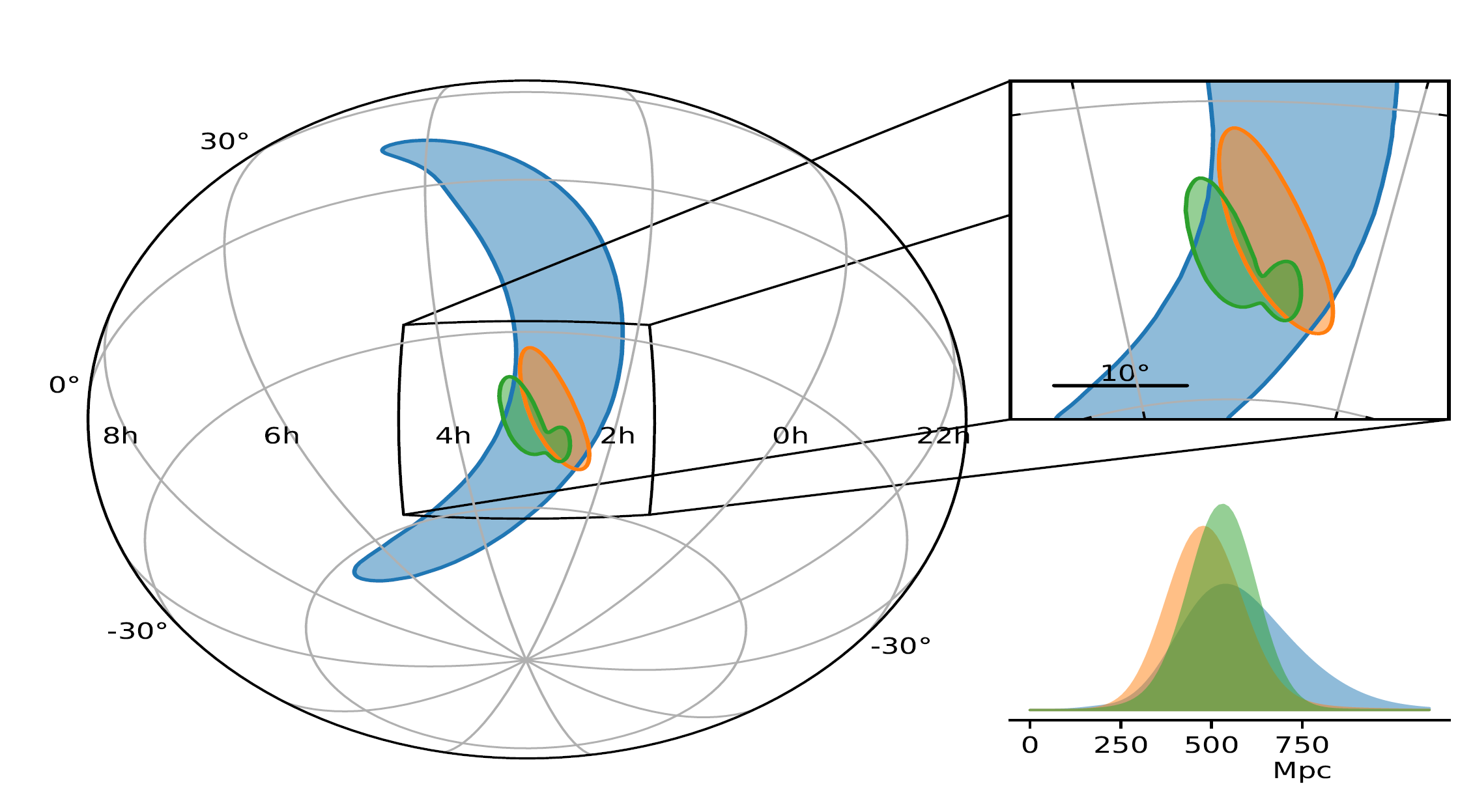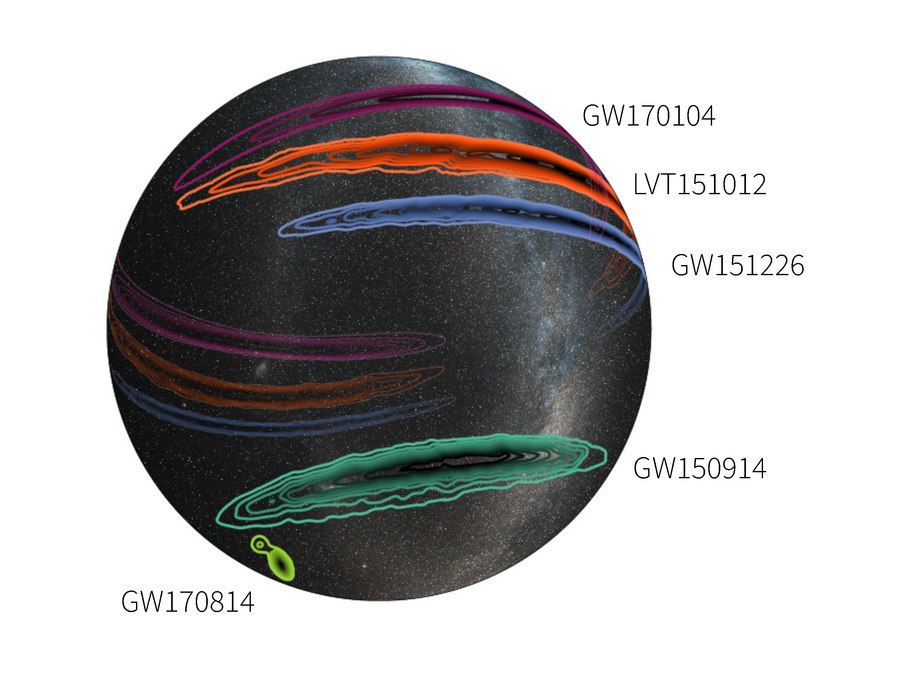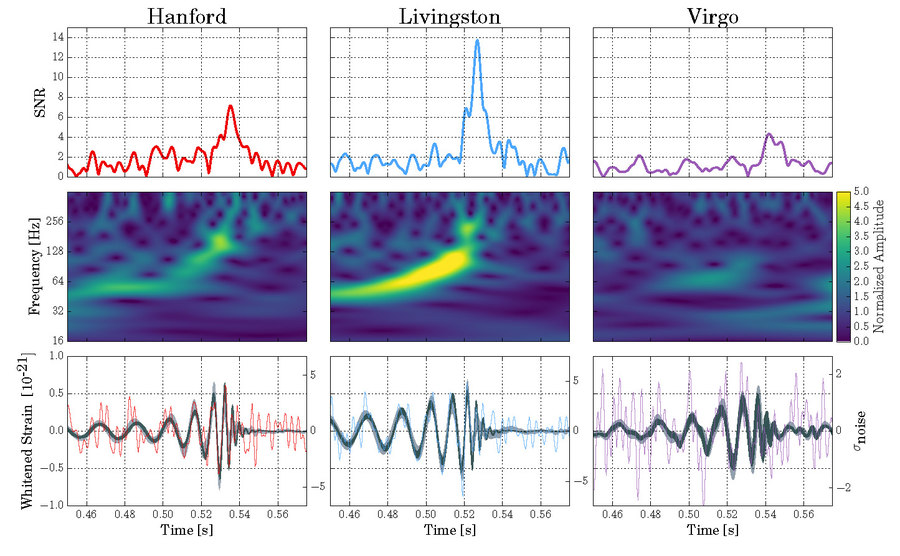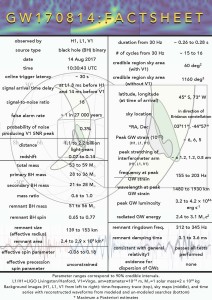Detection of GW170814
On August 14, 2017 the LIGO detectors in Hanford, Washington and Livingston, Louisiana, along with the Virgo detector in Cascina, Italy, detected a signal from the coalescence of two black holes, with masses 31 and 25 times the mass of the sun, merging into a more massive black hole that is 54 times the mass of the sun. This is the first detection by the joint LIGO-Virgo three detector network. A network of detector enabled localisation of the source through "triangulation" and gave access to the polarisation of the waves. The planned LIGO-India detector promises many fold improvement in source localisation accuracy as compared to the LIGO-Virgo network.

The GW170814 detection paper on Physical Review Letters
Specific contributions by IUCAA researchers
- Matched Filtering
- A key analysis technique needed for every detection so far, pioneered at IUCAA
- Several refinements to the original analysis (e.g., to include multiple detectors)
- Development of efficient analysis techniques
- Network Analysis
- Optimal strategy to search for a signal in data from multiple detectors
- Estimation of Black Hole Binary parameters
- In improving the estimation accuracy of Black Hole spins
- Testing Einstein's General Theory of Relativity
- Detector Characterisation
- Application of Machine Learning to classify instrumental & astrophysical transients
- Development of an earthquake monitoring system
- Development of digital filters for LIGO seismic control system
- Application of Machine Learning for rapid documentation search
- Efficient methods for handling instrumental artefacts
- Towards building a LIGO detector in India
-
- To dramatically improve the accuracy for estimation of location and orientation
- Developing search algorithms for Stochastic backgrounds
- A stochastic background from binary black-holes may be detectable by advanced LIGO in the next few years
Localisation errors for all the detections so far. GW170814 has significantly smaller localisation error thanks to the network.

What was detected in the three detectors

Parameters of the detected signal
Masses:
Masses of primary black holes: 30.5 and 25.3 (solar mass units)
Effective spin parameter primary black holes: -0.06 to 0.18
Mass and spin of the merged BH: 52 (solar units) and 0.7 (dimensionless)
Distance of event:
540 Megaparsec or 1.8 billion Light Years (1.7e+22 km)
Gravitational Wave signal:
Date of Arrival: 14 Aug 2017
Time of Arrival: 04:01 PM IST
Energy released in the form of GWs: equivalent of 2 solar mass (remember E = mc2)!
Source Localisation Accuracy 60 Square Degree (compared to 1160 Sq. Deg. with two LIGO detectors only)

